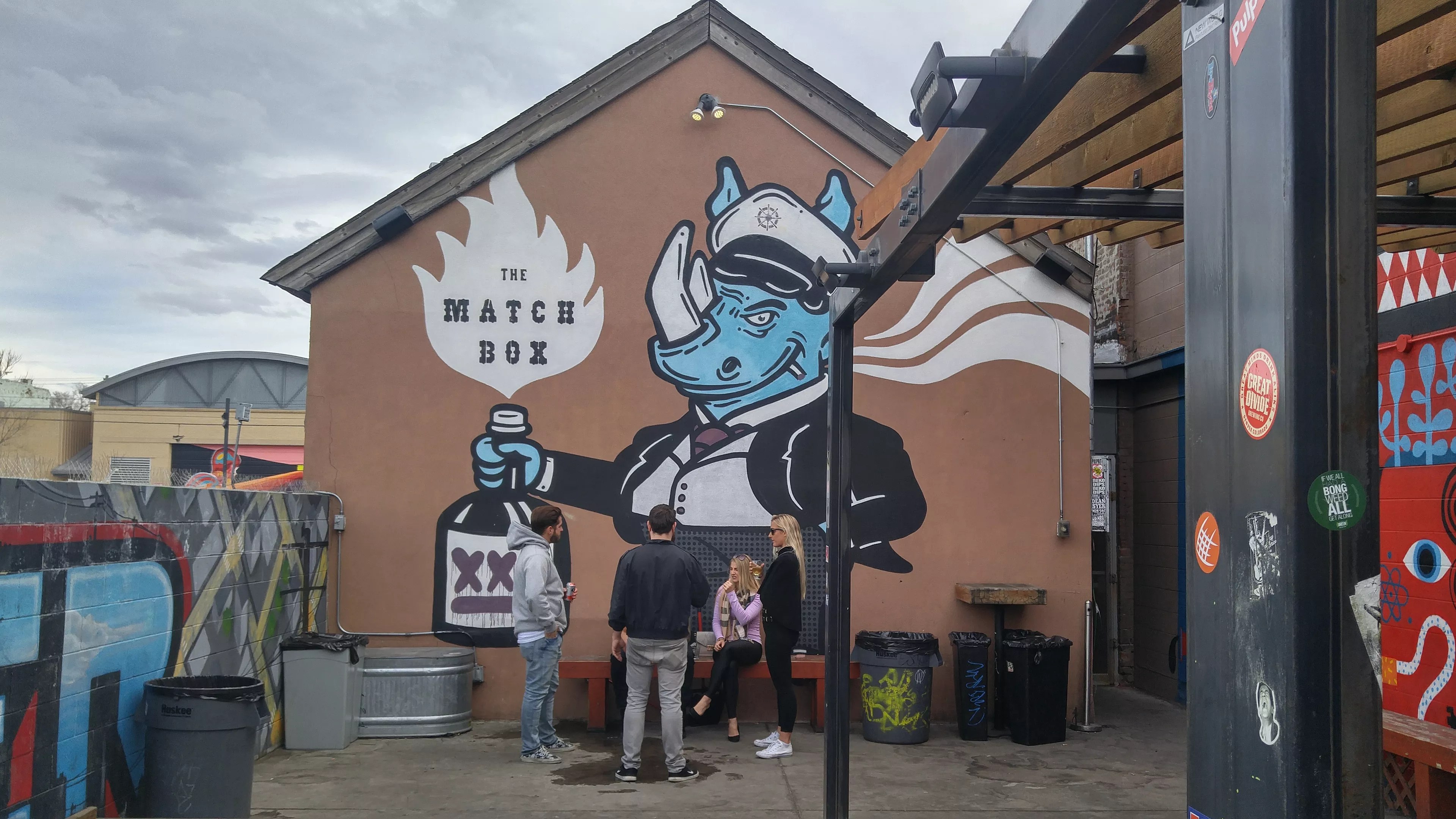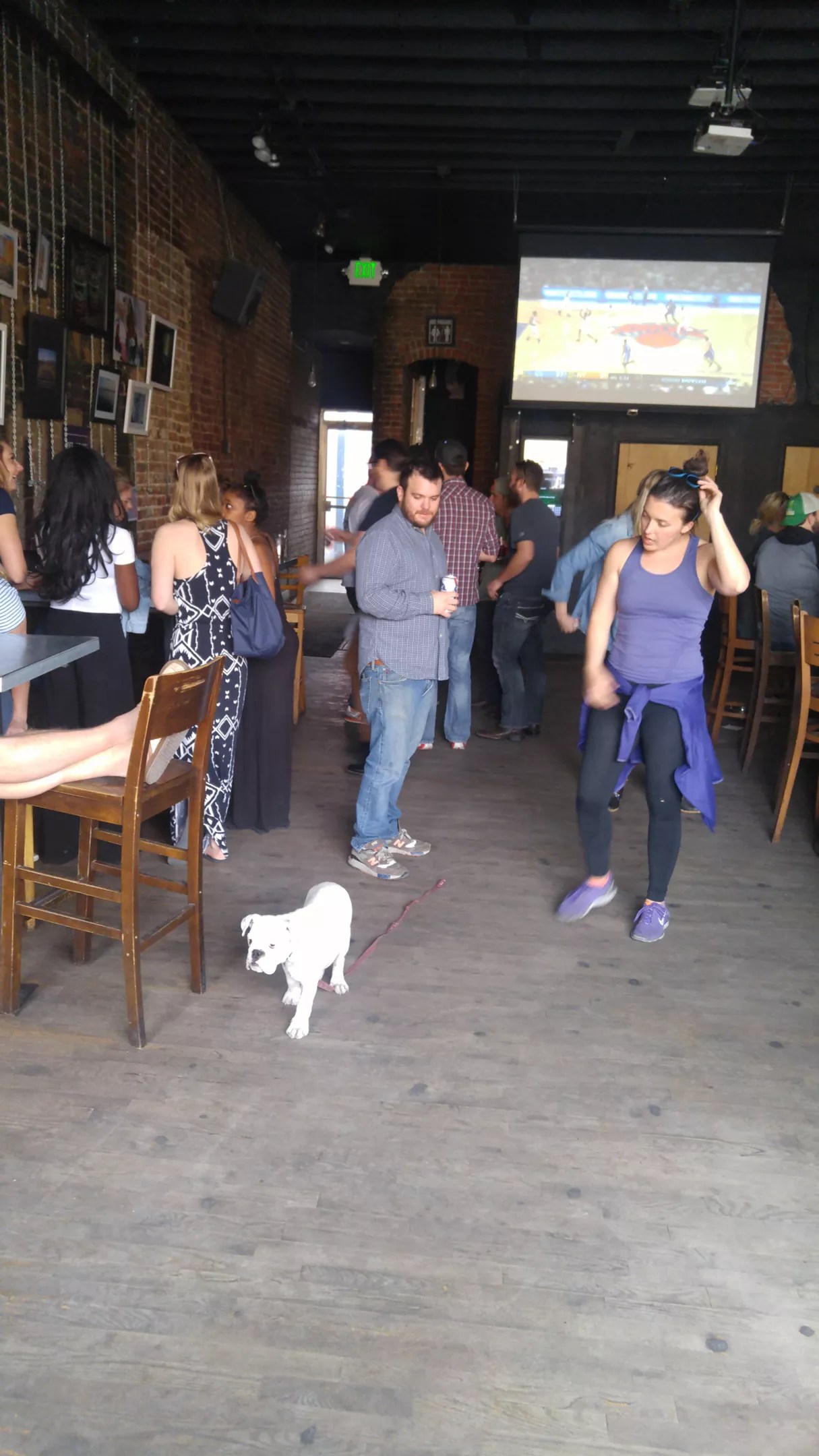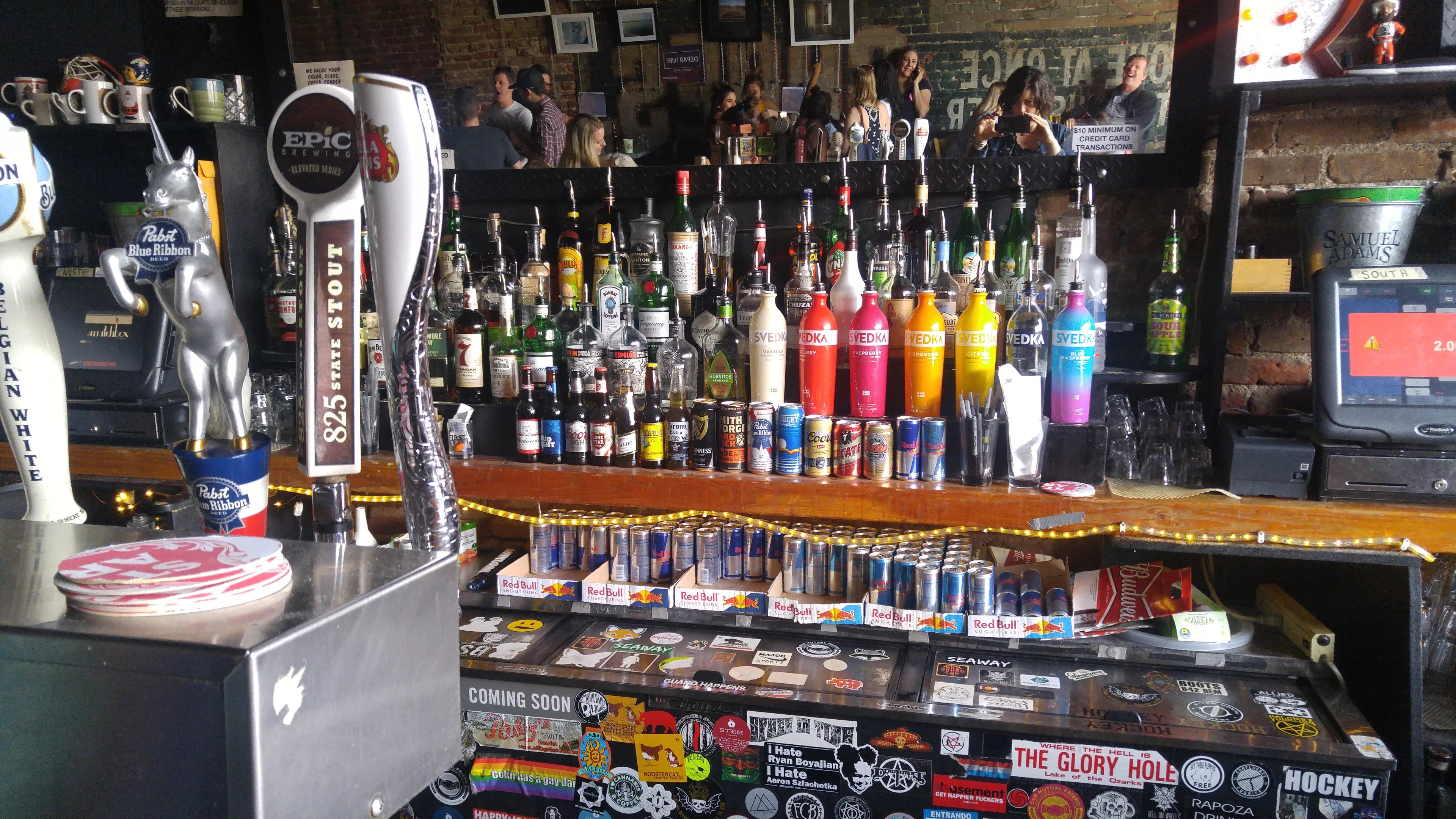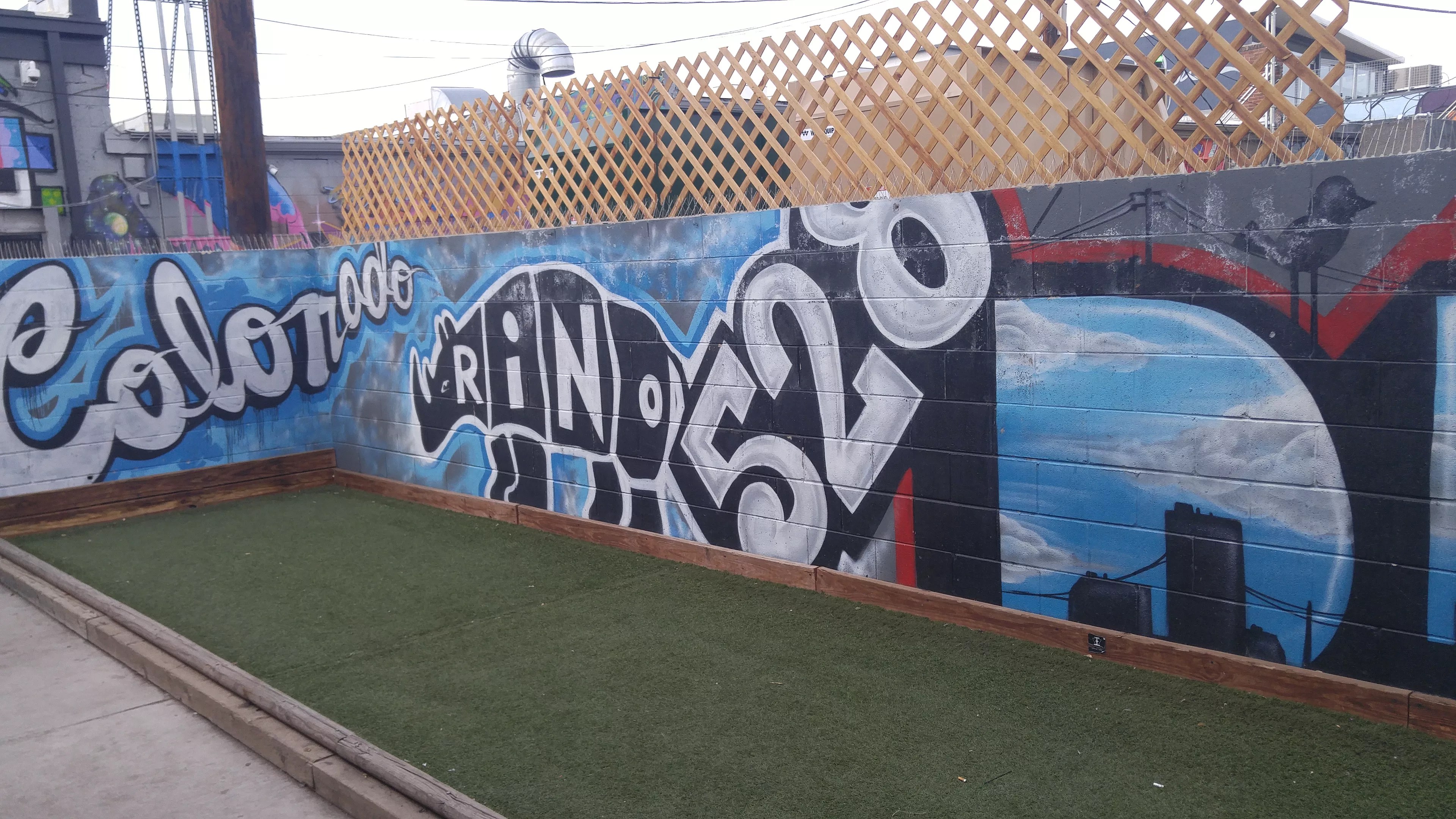
Sarah McGill

Audio By Carbonatix
Before LoDo-sized crowds came to RiNo, Sudhir Kudva stumbled upon an interesting opportunity to open a bar in the now-booming neighborhood. At the time, the 2600 block of Larimer Street and most of the surrounding area was home only to warehouses, liquor stores and a few outposts of nightlife at the Larimer Lounge, Meadowlark, Tracks and the Walnut Room.
Kudva is a charitable guy; I met him several years back because of his efforts to raise funds to support mentoring in the Denver area, benefiting the organization I work for at my day job, Colorado Youth at Risk. His philanthropic bent also led him to his bar, the Matchbox. According to Kudva, back in 2010, he planned to host a charity event for Toys for Tots in a DIY space at 2625 Larimer and, after he put the deposit down, learned that the spot, which was in rough condition, wasn’t going to be ready for his event. The guy who had rented him the venue kept dragging his feet about giving back the deposit; Kudva and his business partners, Justin Anthony and Lisa Vedovelli, decided to reach out to the building’s owner. When they got in touch, he says, the landlord jumped at the chance to evict the current tenant, who owed money for back rent, and turned the lease over to the three for a bargain.
Kudva already knew a thing or two about bars, having owned the Squire Lounge, a Denver legend in the realm of neighborhood dive bars, since 2004. The idea for the Matchbox began with the acquisition of the space, but it took a little while to choose the name and the signage. Some people in the planning process wanted no sign, some wanted a neon sign, some wanted a different theme, but eventually, Kudva says, the Matchbox name won out “because it had fire” – quite literally, as the space had experienced a fire before the trio took over and needed considerable repairs before the Matchbox could open.
Kudva and company also made the bold choice of having no actual lettered sign with the name of the bar, just a huge metal sculpture of a literal box of matches above the door, made by local artist Ted Price. With the name and sign decided, and after some renovations to the building, the Matchbox was born in 2011.
I soon started going to the Matchbox, because I work in the vicinity and have several friends who live nearby. The crowd was usually a neighborhood one: older folks from the neighborhood interspersed with younger locals and their dogs, hipsters grabbing a drink before a show at the Larimer Lounge and groups of twenty- and thirty-somethings who lived in the first wave of rental lofts and warehouses in the surrounding blocks. Drinks were (and still are) cheap, and the place had a calm vibe; it was mostly an after-work or weekend day-drinking spot, at least for me. This was only a half-dozen years ago, but the Matchbox was one of only a few options in the area for happy hour – and by the way, the Matchbox happy hour is still one of the longer ones in town, running from 4 to 8 p.m. every day of the week.

This puppy is ready to party at the Matchbox, where dogs are still allowed because the bar doesn’t serve food or brew beer.
Sarah McGill
Within a year or two of the opening, RiNo started to boom into what it is today, with bars, restaurants, art galleries and breweries sprouting up faster than you can say “gentrification.” New apartment and condo buildings and lofts in old warehouse spaces have multiplied as well, and the area has never been the same, for better or worse. I still like the Matchbox, but I only go there before dark. When the sun goes down, I turn into some sort of reverse-vampire old person who can’t hang. The bar gets overrun with groups of girls taking selfies and dancing to ’90s hip-hop songs that probably came out before they were born. In the summer, those rented pedal bars powered by tipsy bachelor and bachelorette parties always seem to flood the Matchbox with waves of people who probably don’t really need any more drinks. RiNo in general, and the Matchbox in particular, is now the place to be when the weekend comes around.
Kudva alludes to the same phenomenon. During the week, he can stop by and chat with regulars who have been coming to the Matchbox for years. On the weekends, he has no idea who anyone is, and the bar is usually jumping, so it’s hard to find out. But no matter: He keeps things simple with a commitment to cheap drinks (everything is priced between $2 and $7, and the prices haven’t changed for years) and no cover, ever. That works out well for everyone, from the steady regulars to the weekend party crowd.

The booze options at the Matchbox are plentiful and affordable.
Sarah McGill
I stopped in to the bar recently on a Saturday afternoon for old times’ sake with a couple of friends, one of them an early fan of the Matchbox; she has lived in Curtis Park since before it opened. There was already a healthy crowd for how early it was: a variety of bros in baseball caps, girls in sundresses or yoga pants, dogs, hipsters, people of all races, sexual orientations and levels of bearded-ness – but conspicuously, no one who looked over forty. My friends and I, in our mid-thirties, were probably the oldest people in the house.
We got some cheap mixed drinks and beers and headed out to the patio, which was a bit less crowded, except for a group of man-bun wearers and blond girls with expensive sunglasses who kept trying to climb back and forth into the alley behind the bar, which involved squeezing between the top of the fence and a strip of barbed wire. Somehow none of them died, which was good, but my friends and I had a fine time laughing at them along with probably the second-oldest people in the bar, who were smoking at the table next to us on the patio.
The patio is the only place in the bar suitable for a conversation where you can hear the person you’re talking to, but I also like the Matchbox patio for the ever-changing mural art on the high cinder-block walls. Kudva tells me that the murals periodically change because of the annual Colorado Crush event, which brings artists from not just Denver, but around the world to RiNo to paint murals on the walls of local businesses and minimize tagging and other graffiti. Another highlight of the patio is the turf bocce ball court, which was empty on this particular day.

The bocce ball court on the back patio at the Matchbox has an ever-changing artistic backdrop.
Sarah McGill
The Matchbox doesn’t do any weekly bar events, but it does host the occasional charity or business event. There really isn’t a need for planned events, anyway, with neighborhood-wide happenings like the music festival Project Pabst coming up in May with headliners like Ice Cube and Phantogram, the Crush mural event in September, and the various art and farmers’ markets that seem to be going on constantly in this part of town.
Depending on your preference and the time of day, the Matchbox is the place to see and be seen for casual happy hour or day drinking and bocce ball, or for a packed house with lots of drinking, dancing, bike-bar tours, hipsters, bros and blond girls. But no matter what day or time it is, you won’t pay LoDo prices at the Matchbox, despite that fact that RiNo is rapidly becoming the new LoDo.